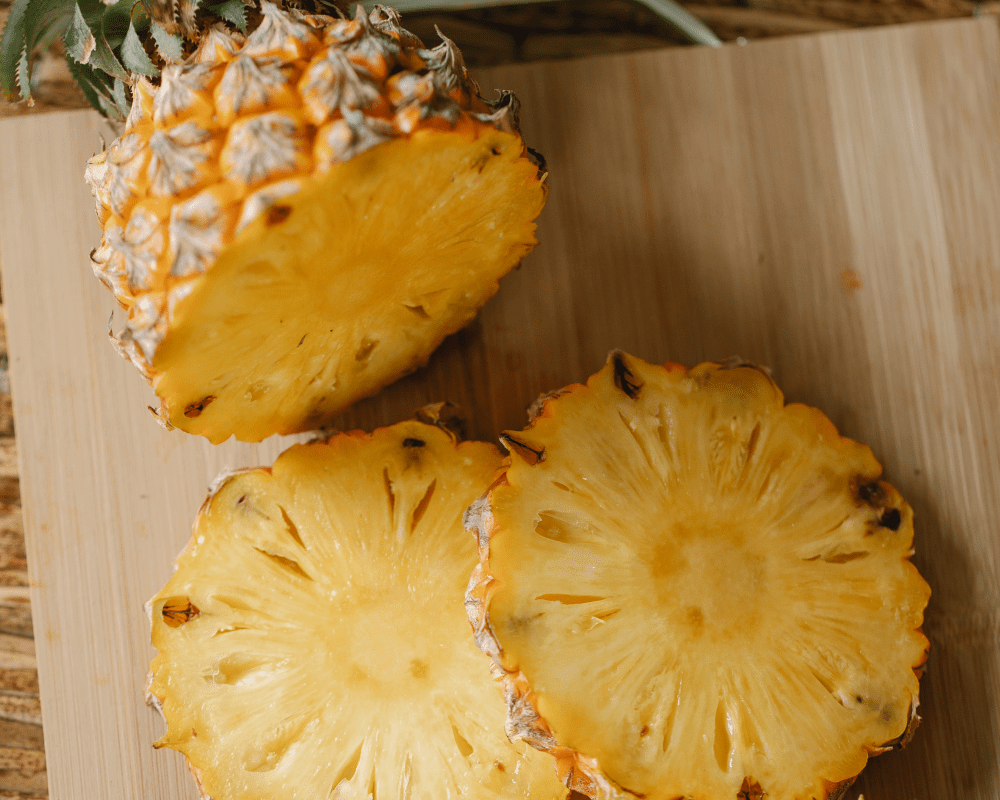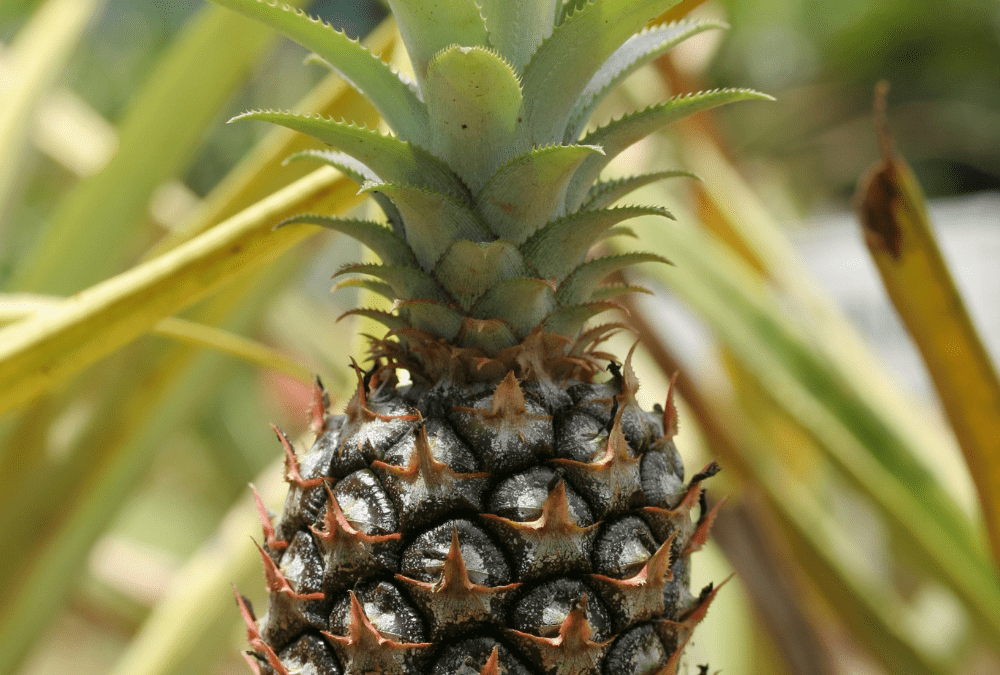Pineapple plants are now at Rainbow Gardens! These are such a fun and easy tropical fruit to grow that we thought it would be worth highlighting today. Pineapples offer up all the feels of the tropics with their palm-like foliage and tangy, yet sweet, flavor that seeps out of their juicy fruits. In my opinion, not much rivals the taste of a fresh cut pineapple to invoke a “beachy” vibe on a hot summer day. Once you see how easy and rewarding it is to grow your own pineapples, we’ve got a feeling you’ll be hustling into Rainbow Gardens to pick out your plant. Let’s take a closer look at this special fruit today.


Pineapples for Good Health
When you are eating a pineapple, the sweetness it delivers to your palate might make you forget that you are eating an extremely healthy food. Besides tasting great, they have plenty more to offer your body. Pineapples are chock full of vitamin C (one cup contains 100% of your daily value), they are high in manganese and contain other beneficial vitamins and minerals. The antioxidants found in pineapple may help to stave off chronic disease by protecting your body against free radicals.
Pineapple also contains bromelain, a combo of enzymes that help break down protein, and is the only food source that contains it. This enzyme also acts as an anti-inflammatory. After a tough day of gardening, if you nosh a few pieces of pineapple it just might help ease your aching joints and help your sore muscles recover faster. There is plenty more to appreciate about this fruit, but we are going to move on and give you some info for how to grow it.


Growing Pineapples
Pineapples ultimately would prefer living in an area that is warm all year round. While San Antonio generally has mild winters, we do have cold spells that could end up damaging plants that don’t appreciate temperatures 28° or lower. This is why we usually opt for growing pineapples in containers. Containers will allow you to bring the pineapple indoors to protect it through winter. A bright, sunny window inside is all you need to keep your plant protected and growing happily through the colder temperatures.
Ultimately, a 5 gallon container will be a good final pot size for this fruit. If you start out with a really small plant, you can begin growing it in a gallon sized container and bump it up as it outgrows its space. All containers must have adequate drainage holes; standing water in pots is not tolerated. A high-quality potting soil rich in organic matter (FoxFarm potting soils are great), including peat moss to slightly acidify the soil, is the preferred potting medium. Avoid heavy soils or moisture control soils. We are aiming for some great drainage here.
Since you know pineapples like warm weather, can you guess the sun exposure needed for successfully growing pineapples? No need to guess, I’ll tell you…full sun! Full sun in Texas is interesting though, isn’t it? A plant that does just fine in a full sun area in spring can be found gasping and choking in that same area during our summers. Pineapples won’t gasp or choke. Full sun is full sun in this case. They can also take periods of drought once you initially get their roots established. You’ll want to make sure your pineapple has ample watering at planting time, and then offer twice weekly, light waterings (watch weather and water accordingly).


Harvesting Pineapples
Will the wait be worth it? It takes a little while for your pineapple to be ready for you to eat. Like, about an average of over a year. According to TAMU, a sucker (transplant) will take about 16 months to flower and then about 6 months to develop into a fruit worthy of harvesting. (Of course this will all depend on: weather, temperature, care, winter protection, etc…)
Allow fruit to develop a yellow-orangish hue on the outer rind. Do the smell test. Pineapples actually smell like pineapple when ripe. Pineapple will not ripen, or sweeten up, on the counter even if the hue of the outer rind intensifies in color. Allow it to ripen as much as possible on the plant before harvesting. You can harvest the plant by using a serrated, or sharp kitchen knife, to cut the fruit horizontally right where it joins to the plant.
Propagating Pineapples
It is pretty easy to propagate a pineapple too! Pineapples will grow additional suckers from the base of their mother plant. You can either allow them to grow on the plant and produce fruit that you will most likely be able to harvest in about a year, or cut the suckers off to grow as separate, new plants.
There is a ton of info on the web and social media channels about propagating the crown of your store bought pineapples. You could go ahead and give it a whirl, but of course we recommend trying this first from your own homegrown pineapple plants. then you will know exactly what chemicals your plant has been treated with…none, right? If you are going to try this technique, cut the top stem off the pineapple plant and allow the cut end to cure (form a layer across the wound and “heal”) for a week or two; just like you let succulent cuttings do. Strip away enough of the lower leaves to give yourself a good length of stem to bury, leaving the crown of leaves about an inch or 2 inches above the soil. You want your plant to be able to stand sturdily in the pot. I have found it helpful to use about three small, skinny, bamboo stakes, placed in a tripod fashion, to support the top from toppling. Water plant as advised above.
Propagating from a crown takes longer for the plant to flower and subsequently fruit (possibly over 2 years). This is the reason my preference would be to propagate straight from the plant, or plant new transplants in succession, especially if I am looking for a continuous supply of pineapples. After you plant one, you just might get addicted.
You Ready? I’m ready, we ready!
~The Happy Gardener, Lisa Mulroy


How much are the pineapple plants?
Hi Priscilla,
The current price of our pineapple plants is $19.99 per gallon.
Nice article 😊 I want to grow some plants 🍍🪴 on my 4th floor balcony. Morning to noon direct sun light only. Will 1/2 day be enough?
Thanks, mkg
Hi Mary,
If you can get at least 6 hours of direct, full sun out of your area on your balcony, you should be able to try a pineapple in a pot.